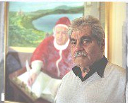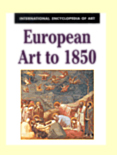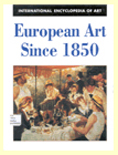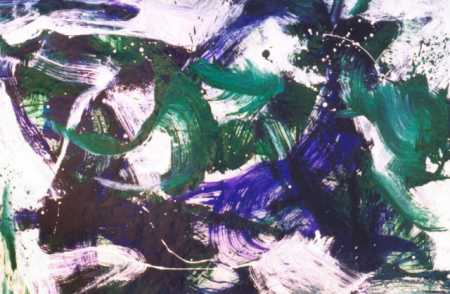
Tony Lucchesi
friend and art teacher to the family in Rome, 1963-1967.
Many dinner parties at 116 via Cadlolo, Villino 2, Interno 3 -- across from Cavalieri Hilton
We knew Tony as an abstract expressionist, a strong abstract expressionist who only grew in strength (Y2000, above).


The
surprise is not Tony's authoring a Facts on File book with Fulvio
Palombo on all of European art history before 1850 (companion
volumue "Since 1850" by Nancy Malloy). The amazing
project is painting an historical and historic set of Papal portraits.
The blog excerpt below expalins how the project grew from a
nobleman's commission.
The papal
portraits were exhibited in Castelgandolfo, the summer residence of the
popes in the mountains southeast of Rome. A slide show of the
exhibit is posted at http://fulton2.wordpress.com/page/2/ and again here.
Blog excerpt:
A Refreshing Change in Papal Portraits
by Susan Ann White (2008)
From the blog: http://fulton2.wordpress.com/the-lazio-popes/
The
papal portrait is the epitome of formality. Usually the sitter is
enshrined in his own world remote from the viewer on whom he gazes
down. There are, of course, exceptions, such as Francis Bacon’s series
of popes who are thrust into blackness from which they survey the
viewer, at times with ghoulish or diabolical expressions on their
faces. Another enlightening exception is the series of pontiffs
depicted life-size in the exhibition ‘I Pontefici nel Lazio’ (‘The
Lazio Popes’), which are the work of the American artist Tony Lucchesi and the Italian painter Fulvio Palombo,
two exponents of Abstract Expressionism (read New York School), who
here have embarked on an excursus into figuration as the most effective
way of bringing the popes to the people.
It
all began when Lucchesi was commissioned by Prince Boncompagni Ludovisi
to execute a copy of a portrait of his papal ancestor Gregory XIII
(1572-1585) to hang in his country residence. When it was finished
Palombo had the idea of creating a gallery of popes connected with the
Lazio region (by birth, achievements, ecclesiastical offices), not
represented in the cold, austere, traditional manner of the past but
brought alive to communicate with the public, thus permitting the
viewer to identify with them as individuals – which is what they have
succeeded in doing.
[end excerpt]
Rev 26Mar09




